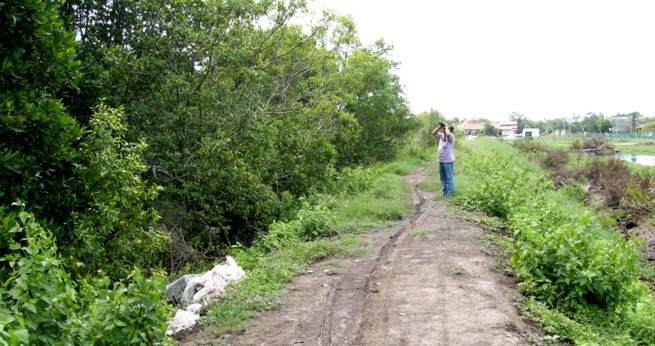|
|
| The Matang Forest and its adjacent
coastline is of major importance. It is a staging area
for migratory waders and is the major remaining area of
suitable habitats in Malaysia for the large birds - Milky Stork and Lesser Adjutants. The Milky Stork, an endangered species can now be found only in Kuala Gula , Malaysia. So far the birds seen were confined to this area. Speculations that there could be between 85 to 100 of these birds left in the world! Matang is one of the 2 large forest left in Peninsula Malaysia capable of supporting a viable breeding population of Milky Stork. More frightening is that three were no signs of breeding nor immatured been spotted. Beside being nesting sites, the mudflats are also hunting grounds for other species of birds. Of special mention is the inland Lakes on Pulau Kelumpang. It is shielded and isolated from the outside world and favors feeding and roosting area. The lesser Adjutant is also endangered. Good news is that this bird has wider distribution in Peninsula Malaysia. The Matang area supports 50% of this birds population. Significant among the local birds are the Black -crowned Night Heron [Nycticorax nytocorax], that keeps shifting its breeding site within the region. Over 1,000 herons and egrets from 12 species are recorded. The main species being
Among the many sites monitored for wildlife counts, Pulau Terong stands out as the most visited by birds followed very closely by Pualau Kelumpang . while migratory birds are :- |
| Common Redshank | Tringa totanus | BlackTailed Godwit | Limosa limosa | |
| Curlew Sandpiper | Calidris ferruguuuinea | Terek Sandpiper | Xenus cinereus | |
| Marsh Sandpiper | T. stagnatilis | Whimbrel | Numenius phaeopus | |
| Mongolian Plover | Charadrius mongolus | Asian Dowitchers | Limnodromus semipalmatus |
|
I have copied the above information that are available on the internet. Then be careful of the impression that promotions gives, as to the vicinity filled with birds during the migratory season. You must remember that the whole forest belt is very large and migratory birds, like the rare local birds avoid coming into contact with human. For serious birders, Kuala Gula is some traveling time away. Before you make your maiden visit, it's best to seek the experiences of those who had being there. Much talk about Milky Storks, migratory birds or migratory seasons, be clear as to which class of birds are you expecting. |
|
|
I have taken the
opportunity to show you some pictures of the wild life in the vicinity
that you are visiting. There will be another page just to show you
sample of uncommon birds that you likely to see. Those are usually
associated with mangrove areas.
In the first picture here are the numerous single claw crabs that dotted the mudflats at low tide. It is an interesting scene.
|
|
Another not so common mammal would be the Dusky leaf Monkeys. These are not the Macaques but rather a more timid Langur. It is easy to spot them. They are hardly considered as pest and left undisturbed. Likewise they do shy away from approach of visitors. On the contrary, the presence of a huge population of Otters are hardly seen. Unless, you are wary of their presence and made your approach to their feeding spot stealthily. The picture here shows a pair increasing their distance as I moved towards them. |
|
This is how your typical birding trail would look like. A bund alongside the river bank. In wet weather soggy and sticky. In dryer times, parched. This is a trail over 2 kilometers long. A narrow belt of mangrove, hardly 10 meters wide separates the bund from the inter-tidal mudflats. |
 |
|
. |
|
The above picture shows the bund on the left of the Gula's settlement. You could see traces of building in the background on the horizon |
|
|
|
On the right side, or after having past the settlement, the forest and planted areas start. Then continuing deep into Palm Oil estates would be another area suitable for birding. This track going north was on an unstable track. Made out next to a monsoon canal. It ran beside the Palm Oil plantation. In fact there are 2 parallel tracks. The first one similar to that of the south running outside [left] of the canal. This is a short track. This second one [right] used by the plantation is a much extended route. Beside these two trails that day trippers can follow on their own for some serious birding, then there is the potentials offers gigantic mudflats. Publicity talks about a Chalet operated by the Wildlife Department in the midst of the mudflats. Then there were recommendations of hiring a boat for a tour of the coastal areas for waders. Do not be surprised that such facilities while available are not readily there at hand when you needed them. Furthermore, having compared to facilities organized by their Thai counterparts, I refused to get involved with their charges. |
 |
Khong's Travel Guide |
 |